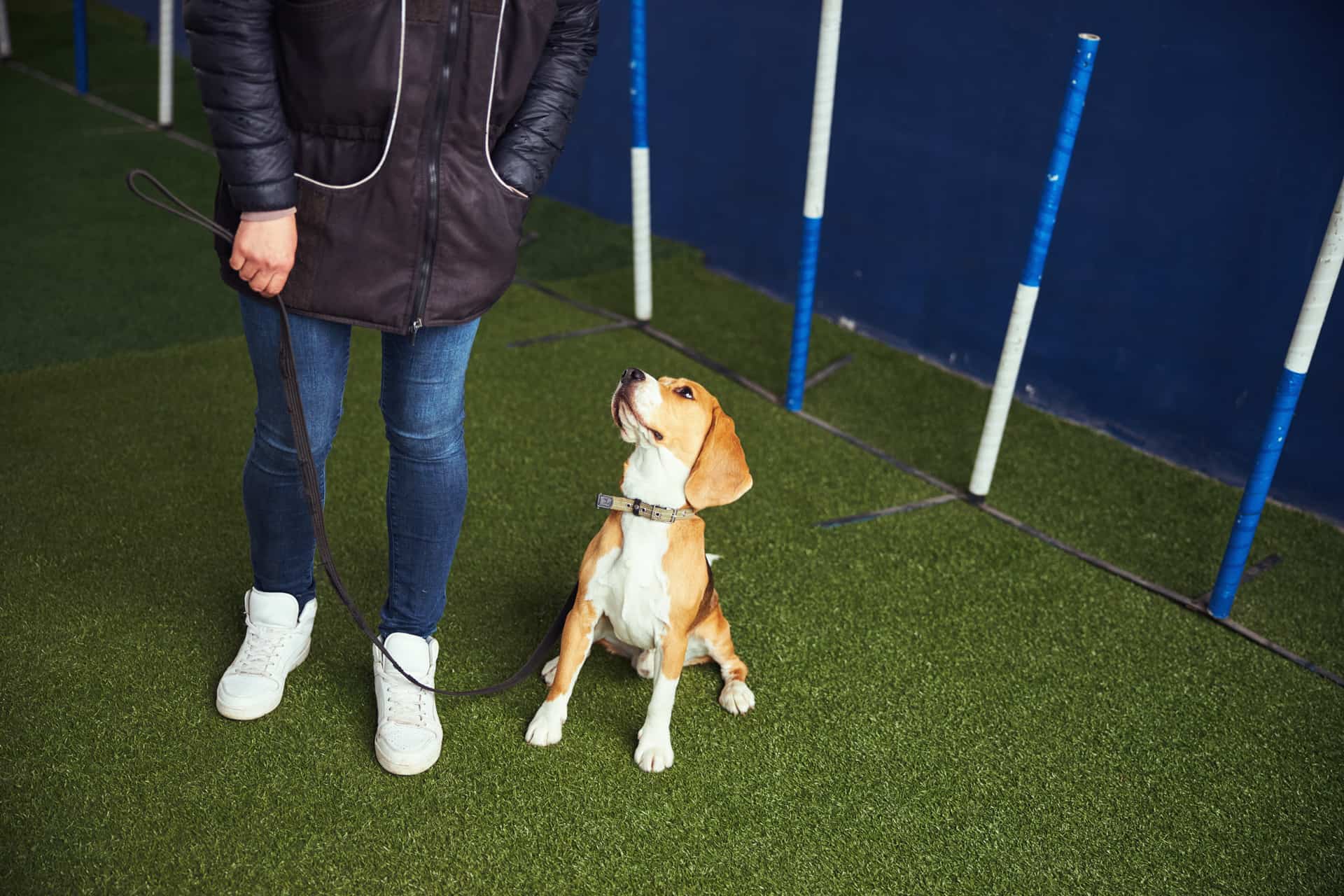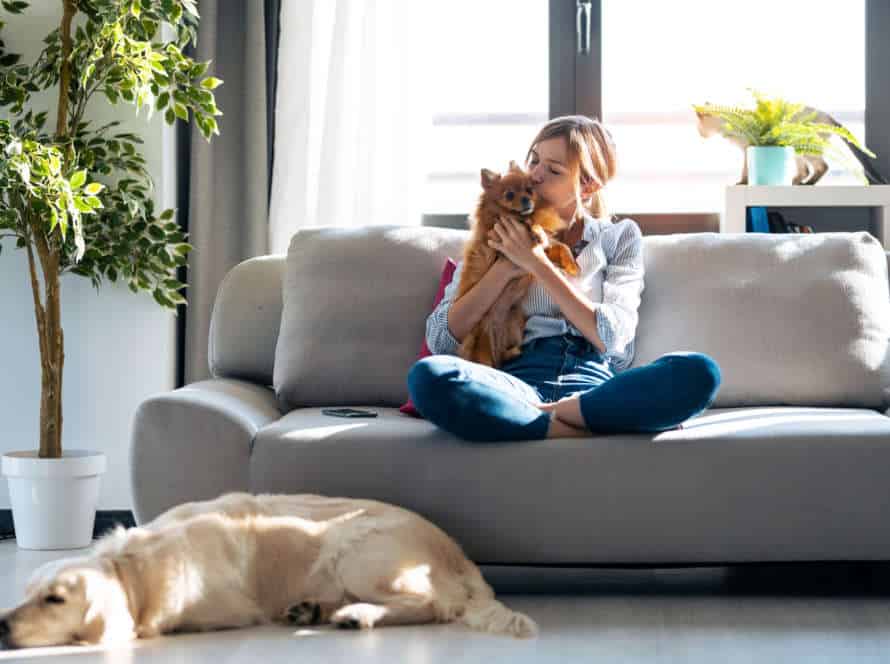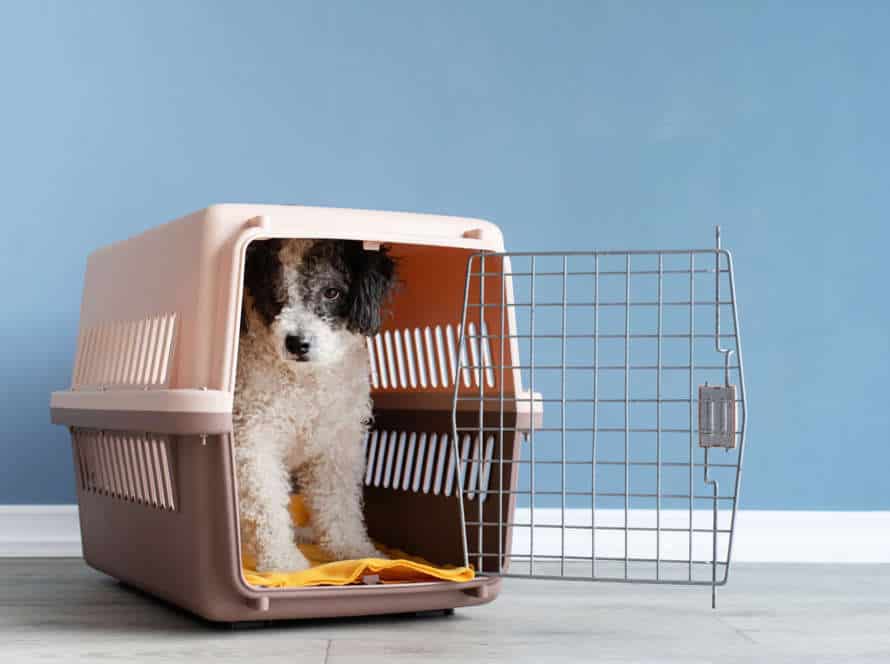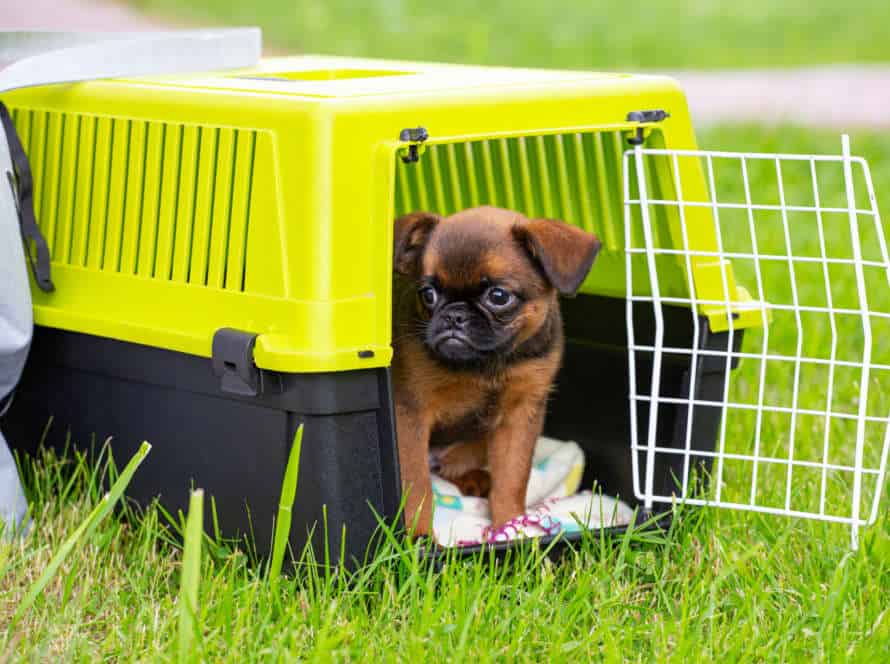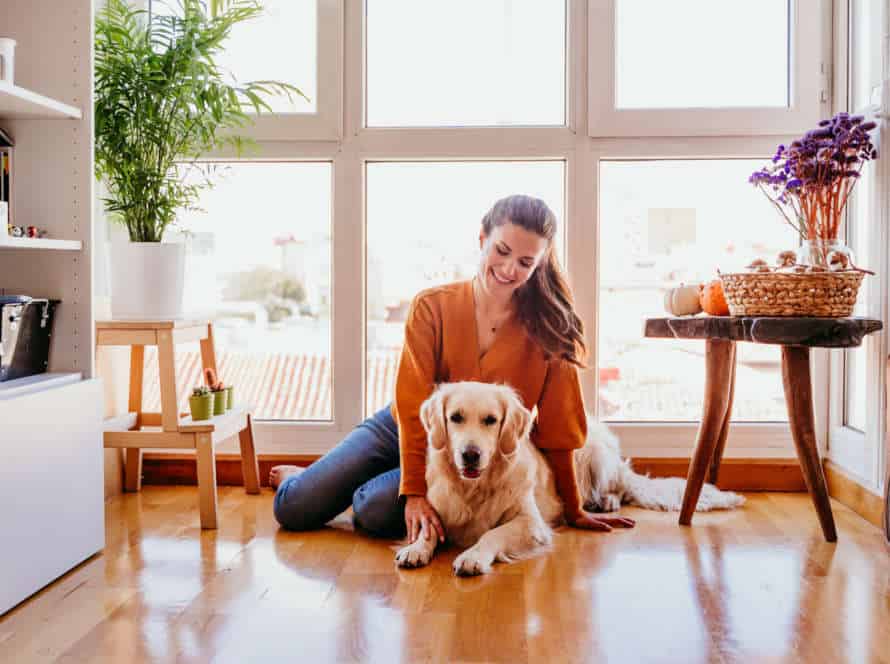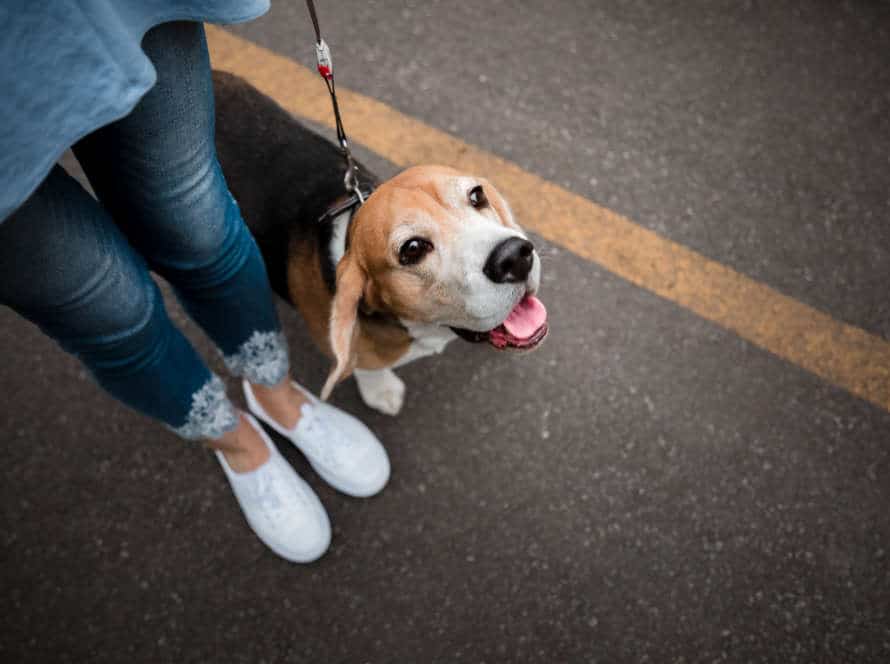Leash Reactivity Success Stories: From Reactive to Relaxed
Leash reactivity is a challenge many dog owners face. But it’s not impossible to overcome! Here are 3 success stories of dogs who went from reactive to relaxed while on a leash.
- Bella, a 3-year-old mixed breed, used to bark and lunge when around other dogs on walks. With help from a certified trainer, Bella overcame her leash reactivity and even made friends with her once-feared neighbors.
- Max, a 5-year-old Border Collie, was chasing after cars and bicycles on walks. But with consistent training and positive reinforcement, he learned to focus on his owner instead.
- Luna, a 2-year-old Pitbull, was exhibiting aggressive behavior towards other dogs. But with help from a professional trainer and socialization, she now walks calmly and confidently without reacting.
If your pup is facing leash reactivity, get help from a certified behavior modification trainer. With patience, consistency, and positive reinforcement, your pup can become a relaxed and well-behaved walking companion.
Outline:
Leash reactivity is a common problem for dogs and their owners. But, there are success stories! Take Max for example. He used to bark, lunge, and growl at other dogs while on walks. With patience and consistency, he became a calm walking companion.
Luna was another success. She would bark and pull on her leash when she saw a squirrel. Her owners worked with a trainer to teach her impulse control and obedience skills. Now, she can walk calmly even when there are squirrels around.
These stories show that with the right training and management, dogs with leash reactivity can overcome their fears and anxiety and have enjoyable walks with their owners.
Understanding Leash Reactivity
To help your pup become less reactive and more relaxed on walks, you need to understand leash reactivity first. This behavior problem is common and can be caused by fear, anxiety, or lack of socialization.
One way to solve it is desensitization and counter-conditioning. This means exposing your dog to the trigger, but rewarding them for calm behavior.
Creating a positive environment is also essential. Use a comfortable and secure leash and harness, avoid tense body language, and give them enough physical and mental stimulation.
With time, patience, and the right techniques, many dogs with leash reactivity have been successfully retrained. A pro tip: Get assistance from a professional dog trainer or behaviorist.
1.1 Definition of Leash Reactivity
Leash reactivity is when a dog reacts in an uncomfortable manner to stimuli like other dogs, people, bikes, or cars while on a leash. This reaction may be barking, lunging, growling, or pulling on the leash, which can be distressing for the owner and those around.
But with the right training and management techniques, leash reactivity can be resolved. Here are some stories of success!
A labrador mix that lunged and barked at strangers on walks is now peaceful and content after consistent leash training sessions with its owner.
A chihuahua-mix that was previously scared of passersby and showed their teeth and growled, is now able to walk past strangers without aggressive behavior due to positive reinforcement.
A boxer mix that used to bark and pull on its leash at the sight of other dogs, is now able to stay relaxed and focused on its owner even in the presence of other dogs. This was achieved through counter-conditioning and reward-based training.
1.2 Causes of Leash Reactivity
Leash reactivity in dogs can have different causes. It could be due to past traumatic experiences, like previous attacks or physical punishment. It could also be because of a lack of socialization and training. Fear, anxiety, and frustration can also cause leash reactivity. For instance, fear of loud noises or frustration from not being able to explore.
To fix your dog’s leash reactivity, you must first identify the cause. This will help you choose the best training techniques and tools.
1.3 Signs of Leash Reactivity in Dogs
Leash reactivity in dogs can show in different ways. Common signs? Pulling, lunging, barking, growling – towards other dogs or people while on a leash. Plus physical signs of distress – dilated pupils, raised hackles, stiff body posture.
If your dog is displaying leash reactivity, you can address & manage the behavior. Professional dog trainers use counter-conditioning, positive reinforcement & desensitization to help dogs overcome triggers & learn new, calm behaviors on the leash.
Success stories from fellow dog owners can give you inspiration & motivation. Work with your reactive pup for relaxed, enjoyable walks!
Methods to Help Overcome Leash Reactivity
Reactivity in dogs on leash can be tricky. But, with the right techniques, consistency and proper help, progress can be made. Success even!
- Counter-conditioning: Change the dog’s emotional response to a certain trigger by making positive links.
- Desensitization: Expose the dog to its trigger and increase its threshold of tolerance gradually.
- Positive reinforcement: Reward or praise the dog when it does something good.
- Consult a pro: Identify the cause of reactivity and get personalized training and behavior modification.
With the right techniques and consistency, reactive dogs have shown improvement, even been able to overcome their leash reactivity.
2.1 Positive Reinforcement Training
Positive reinforcement training is a great way to reduce leash reactivity in dogs. It has been successful with many dogs, who go from reactive to chilled on their walks.
This involves rewarding desired behavior, like walking calmly on a leash or ignoring distractions.
Here are some success stories:
- My pup barked and lunged at other dogs before, but now she’s calm – all thanks to treats and positive reinforcement!
- Positive reinforcement has helped my dog go from spinning, barking, and pulling, to looking to me for guidance and getting treats for good behavior.
- I had no hope for my pup walking politely on a leash, but now he does! Positive reinforcement training worked like a charm.
These stories show that positive reinforcement is an awesome tool to transform reactive dogs into relaxed and well-behaved pals.
2.1.1 Identifying Triggers
Identifying triggers is key to helping your reactive pup become more relaxed. Here’s how:
- Observe them on the leash. Look out for signs of stress, like whining, growling, pulling, or ear flattening.
- Note down type of trigger (other dogs, bikes etc) and the distance it occurred at.
- Use this info to plan desensitization and counter-conditioning to help your pup.
- Pro tip: Hire a pro trainer to spot triggers and make a plan for your pup’s needs.
2.1.2 Counterconditioning
Counterconditioning is a means of changing a dog’s emotions towards a certain trigger, from negative to positive, while rewriting its emotional background. The aim is to make the dog feel comfortable around the stimulus, rather than being aggressive or fearful. Here are 3 leash reactivity success stories from counterconditioning-
- Charlie, who used to be reactive, now sits still and is not aggressive towards other dogs.
- Luna, who used to bark and lunge at other dogs, now stays relaxed and even wags her tail when meeting other dogs.
- Murphy, who was terrified of loud noises, is now calm during thunderstorms after counterconditioning with positive reinforcement techniques.
Consistency, patience and positive reinforcement are key to successful counterconditioning.
2.1.3 Desensitization
Desensitization is a powerful way to change a reactive pup who barks and lunges while on a leash into a chill and obedient canine pal. Desensitization involves exposing your pup slowly to the situation or stimulus causing their reactivity in a positive and managed way, until they no longer respond. Here are several examples of pups who conquered their leash reactivity through desensitization:
- Max, a terrier mix, would bark and lunge at other dogs on walks. With months of daily desensitization exercises, Max was able to calmly pass by other pooches without any agitation.
- Bella was a rescue dog who became agitated and barked at people and dogs on walks. A professional dog trainer and consistent desensitization training assisted Bella in being able to take walks without any signs of reactivity or anxiety.
- Charlie, a golden retriever, pulled and barked when he saw other dogs on walks. His owner began by gradually introducing him to dogs at a distance, and rewarding him for calm behavior. Over time, Charlie became more relaxed, and is now able to walk past other dogs without difficulty.
Desensitization is a verified technique to help dogs get over their leash reactivity with patience and consistency.
2.2 Management Techniques
Management is key to calming reactive dogs – just ask these success stories! Avoiding trigger situations, using tools like harnesses and head collars, or using desensitization and counter-conditioning techniques can help. But, it’s best to get advice from a pro dog trainer or behaviorist to work out the best plan for your pup. Keep in mind too, that management is only one part of the process – training and behavior change are also important for success.
2.2.1 Using a No-Pull Harness
A no-pull harness can help with leash reactivity in dogs. It applies gentle pressure to the chest or front legs when they pull.
So, introduce it to your dog this way:
- Let them sniff the harness first.
- Put the harness on and do up all the straps and buckles.
- Attach the leash to the front clip.
- Gently redirect them when they pull.
- Praise and reward them for good behavior.
With patience and use, the harness can lead to calmer and more relaxed walks.
2.2.2 Avoiding Trigger Situations
Staying away from trigger situations can be a great way to stop leash reactivity in dogs and make them calmer during walks.
Figure out what could trigger your pup, like other dogs or people on walks.
Then, avoid these situations by switching up your walking route or going at quieter times of the day.
Teach your pup a “leave it” command as well. This can help them look away from triggers and stop them from overreacting on the leash.
Though it may not be an option forever, avoiding trigger situations can be used with other training methods to help your pup become more relaxed and confident on walks.
2.2.3 Knowing When to Walk Away
Recognizing when to leave is a must for handling leash-reactive dogs. If your pup’s behavior is escalating, take them away from the situation pronto! Signs that your pooch is getting reactive: tensing, leaning on the leash, growling, barking.
Here’s how to tackle leash-reactive behavior:
- Keep cool and still.
- Shift your dog’s attention to you with a treat, toy, or command.
- If this does not work and your pup’s conduct is escalating, quietly and quickly walk in the opposite direction.
- Once your dog relaxes, reward them with a compliment and a treat.
In time and with practice, your dog will understand that calm behavior is rewarded, and reactive behavior is not.
2.3 Medication
The heading “2.3 Medication” in the context of “Leash Reactivity Success Stories: From Reactive to Relaxed” refers to the use of drugs prescribed by a vet.
Leash reactivity is a common problem with dogs exhibiting aggression or hyperactivity when on a leash. Medication can help reduce these symptoms and provide positive reinforcement to both the dog and its owner.
Talk to a vet to decide the best medication for your pup’s needs. Together with consistent training and positive reinforcement, medication can help your dog beat leash reactivity. Leading to more content and enjoyable walks for the both of you!
2.3.1 Types of Medication for Leash Reactivity
There are many meds for dogs with leash reactivity. Using them alongside training and behavior modification is best. Here are the most common:
- Antidepressants like fluoxetine or sertraline. They can reduce anxiety and help mood.
- Anxiolytics like alprazolam or clonazepam are great for decreasing anxiety.
- Calming supplements like tryptophan or L-theanine. They work without prescription meds’ side effects.
It’s important to speak to a vet to see which meds are right for your pup.
2.3.2 Pros and Cons of Medication
The pros and cons of medicating leash reactivity are important to consider. Pros: Medication can help manage severe anxiety and aggression. It can reduce distress, improve quality of life, and make training easier. Cons: Medication success varies, and side effects can occur. Behavior modification training must also be used. Over-dependence is a risk, too. Consulting a vet or behaviorist is best when deciding to use medication.
Real-Life Success Stories
Real-life success stories of leash reactivity prove that it’s possible to transform a reactive pup into a tranquil, obedient buddy. Take Daisy, a Golden Retriever. She lunged and barked at people and other dogs during walks. But with patience and counter-conditioning techniques, her owner achieved incredible results. In only a few months, Daisy had improved and was better able to focus.
Max the Corgi was also leash reactive. He barked and lunged at joggers and bikers. His owner trained him with leash techniques and desensitization. With consistent reinforcement, Max stayed chill even when joggers and bikes were nearby.
These tales show that with consistency, patience, and positive reinforcement, you can overcome leash reactivity and have peaceful walks with your furry pal.
3.1 Case Study 1: Overcoming Fear and Aggression towards Other Dogs
Case Study 1 reveals the victorious change of a fearful and aggressive dog into a content and happy companion. It was done through precise training methods and techniques.
Identifying the root of the leash reactivity and treating it with positive reinforcement training was key. The dog was shown exchange coping behaviours such as calmly sitting or turning away when around other dogs. These correct behaviours were rewarded with treats and love. After several weeks of instruction and repetitive practise, the dog developed a considerable decrease in fear and aggression when walking. It could now take a relaxed and stress-free stroll with its owner.
This case study proves the power of positive reinforcement training in improving the behaviour of leash-reactive dogs and strengthening the relationship between dogs and their owners.
3.2 Case Study 2: From Panic Attacks on Walks to Enjoying Time Outside
The second case study shows how a dog owner solved their pup’s leash reactivity. Instead of panic attacks, walks became an opportunity to enjoy the outdoors together.
Various approaches were tried – such as counter-conditioning and desensitization. Finally, one method worked. The distance between the pup and the trigger was slowly increased, and the dog was rewarded for being calm. This gave the pup confidence to manage their reactivity. Over time, the pup learnt to focus on their owner and ignored the triggers.
Leash reactivity can be addressed with patience, consistency and positive reinforcement. Each dog’s progress is unique, but with the right approach and mindset, it’s possible to take a reactive pup to relaxed.
3.3 Case Study 3: Building Confidence and Trust with Positive Reinforcement Training
Case Study 3 features many dog owners who successfully used positive reinforcement training to handle their dogs’ leash reactivity problems. This shows how this type of training can change a dog’s behavior for the better.
By rewarding desired behaviors with treats, praise, and affection, the dogs understand that good behavior results in good outcomes. An example is Max, a dog that used to bark and lunge aggressively at other dogs. With the help of positive reinforcement training, his owner made him feel more confident and relaxed. Now he happily greets other dogs.
Positive reinforcement training is a humane and efficient way to build trust and confidence in dogs and tackle issues like leash reactivity.
Tips for Owners of Reactive Dogs
Having a reactive pup can be tricky. But with the correct methods, it’s possible to assist them in being less reactive. Here are some tips for owners of reactive pups:
- Practice basic commands such as sit, stay or come to build trust and better obedience.
- Use positive reinforcement to boost good behaviour and help your pup connect positive experiences with non-reactive behaviour.
- Create a secure and controlled environment like a quiet room or designated spot to reduce stress and nervousness.
- Think about using a head collar or front-clip harness to give you more control during walks and reduce pulling and lunging.
- Work with an experienced dog instructor or behaviourist to make a personalized plan for your pup’s special needs.
With persistence, consistency and the right techniques, you can aid your reactive pup in becoming more peaceful and comfortable in different situations.
4.1 Patience and Consistency are Key
Training a reactive pup to stay relaxed on the leash takes patience and consistency. With effort, success stories exist! For example, Gus used to bark and lunge at other dogs. But, with consistent training and positive reinforcement, he became calm and attentive during walks.
Bella also barked and growled at other pups. But, after desensitization techniques, she learned to stay cool and even made new pup pals!
Bruno had a history of aggression towards people and other canines. Yet, with patience, consistent training, and help from a professional trainer, he made remarkable progress.
The lesson here? With patience, consistent training, and help from an expert, it’s possible to help your reactive dog become a relaxed, cheerful pup on all walks!
4.2 Don’t Be Afraid to Seek Professional Help
Leash reactivity in dogs? A professional trainer or behaviorist can help! Here are some success stories:
- This owner got positive reinforcement techniques from a trainer. With patience and consistency, the dog can now walk calmly on a leash.
- A behaviorist helped identify triggers and desensitize the dog to them. Through management and training, the dog can now go on walks without reacting.
No shame in seeking help. It can be the best way to change long-term behavior in your pet.
4.3 Celebrate Small Wins
When it comes to training a reactive dog, celebrating small wins is essential! Keeping motivated and encouraging progress is made possible by these leash reactivity success stories. From reactive to relaxed:
- After consistent training, a dog that barked and lunged at every animal remained calm while on a walk.
- After several training sessions, a dog that growled and snapped at strangers began to approach them calmly, wagging his tail.
- Positive reinforcement training helped a fearful dog around other dogs on walks become more comfortable and confident.
- A professional trainer helped a dog reactive to cars on walks tolerate them and walk calmly alongside them.
By celebrating these small wins, you and your reactive dog can stay motivated and patient. This leads to significant progress over time.
Conclusion: Hope for Reactive Dogs and Their Owners
Conclusion: Hope for Reactive Dogs and Their Owners is proof that leash reactivity in dogs can be solved with the right training. Here are examples of success stories:
- Bella, a German Shepherd rescue, was fearful and would bark at other dogs while walking. With positive reinforcement, she’s now more confident.
- Max, a terrier mix, lunged and barked when seeing other dogs. A professional trainer and daily practice helped him stay calm and focused.
- Sadie, a Golden Retriever, became aggressive. But with consistent leash training and positive reinforcement, she became relaxed and can now enjoy walks without incident.
If you have a reactive dog, don’t give up! With patience, consistency, and help from a pro, you can help your pup overcome leash reactivity and go for peaceful walks.
Frequently Asked Questions
1. What is leash reactivity?
Leash reactivity is when a dog becomes agitated, aggressive, or fearful while on a leash. It is a common behavior issue that can be caused by a variety of factors, including fear, anxiety, lack of socialization, or past experiences.
2. Can leash reactivity be cured?
Yes, leash reactivity can be successfully treated with patience, consistency, and positive reinforcement training. With the right approach, dogs can learn to overcome their reactions and become relaxed and confident while on a leash.
3. How long does it take to see progress in leash reactivity training?
The timeline for progress in leash reactivity training can vary depending on the individual dog and the severity of their reactivity. However, most dogs show improvement within a few weeks to a few months of consistent training and conditioning.
4. What training methods are effective for leash reactivity?
Training methods that focus on positive reinforcement and desensitization are generally the most effective for leash reactivity. This involves gradually exposing the dog to triggers that cause reactivity, and rewarding them for staying calm and relaxed.
5. Can medication help with leash reactivity?
In some cases, medication may be used in conjunction with behavioral training to help manage a dog’s reactivity. However, medication should always be prescribed and monitored by a veterinarian.
6. Are there any success stories of dogs overcoming leash reactivity?
Yes, there are many success stories of dogs overcoming leash reactivity and living happy, relaxed lives with their owners. With dedication and the right training approach, dogs can learn to overcome their reactivity and enjoy walks without fear or anxiety.

